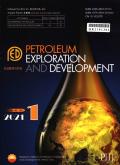Formation and preservation of pores in deep limestone reservoirs: A case study of Upper Permian Changxing Formation, central Sichuan Basin, SW China
IF 8
Q1 ENERGY & FUELS
引用次数: 0
Abstract
In recent years, drilling data from wells Pengshen 10, Heshen 9, Tongshen 17 and Zhengyang 1 in the Sichuan Basin have confirmed the presence of a set of porous reef-beach limestone reservoirs in the Upper Permian Changxing Formation, which breaks the traditional view that deep carbonate oil and gas are only distributed in porous dolomite reservoirs and karst fracture-cavity limestone reservoirs. Through core and thin section observations, geochemical analysis, and well-seismic based reservoir identification and tracking, the study on formation mechanism of pores in deep reef-beach limestone reservoirs is carried out, this study provides insights in four aspects. (1) Porous reef-beach limestone reservoirs are developed in the Changxing Formation in deep-buried layers. The reservoir space is composed of intergranular pores, framework pores, intrafossil pores, moldic pores and dissolution pores, which are formed in depositional and epigenetic environments. (2) The intermittently distributed porous reef-beach complexes are surrounded by relatively dense micrite limestone, which leads to the formation of local abnormal high-pressure inside the reef-beach complexes with the temperature increased. (3) The floor of the Changxing Formation reservoir is composed with interbedded tight mudstone and limestone of the Upper Permian Wujiaping Formation, and the roof is the tight micrite limestone interbedded with mudstone of the first member of Lower Triassic Feixianguan Formation. Under the clamping of dense roof and floor, the abnormal high-pressure in the Changxing Formation is formed. Abnormal high-pressure (overpressured compartment) is the key to maintain the pores formed in the depositional and epigenetic environments in deep-buried layers. (4) Based on the identification of roof, floor and reef-beach complexes, the favorable reef-beach limestone reservoir distribution area of 10.3×104 km2 is predicted by well-seismic integration. These insights lay the theoretical foundation for the development of deep porous limestone reservoirs, expand the new field of exploration of deep-buried limestone reservoirs in the Sichuan Basin.
深层灰岩储层孔隙的形成与保存——以川中地区上二叠统长兴组为例
近年来,四川盆地鹏深10井、和深9井、同深17井和正阳1井的钻井资料证实了上二叠统长兴组存在一套多孔礁滩灰岩储层,打破了深部碳酸盐岩油气只分布于多孔白云岩储层和岩溶缝洞型灰岩储层的传统观点。通过岩心、薄片观测、地球化学分析、井震识别跟踪等方法,对礁滩灰岩深层储层孔隙形成机理进行了研究,得到了四个方面的启示。(1)长兴组深埋层发育多孔礁滩灰岩储层。储集空间由粒间孔、格架孔、化石内孔、模态孔和溶蚀孔组成,形成于沉积和表成环境。(2)间歇分布的多孔礁滩杂岩被相对致密的泥晶灰岩包围,随着温度的升高,礁滩杂岩内部局部形成异常高压。(3)长兴组储层底板为上二叠统吴家坪组致密泥岩与灰岩互层,顶板为下三叠统飞仙关组一段致密泥晶灰岩与泥岩互层。在致密顶底板夹紧作用下,形成了长兴组异常高压。异常高压(超压室)是维持深埋层沉积和表成环境中形成的孔隙的关键。(4)在识别顶底板和礁滩复体的基础上,通过井震综合预测了10.3×104 km2的礁滩灰岩有利储层分布区。这些认识为深部多孔灰岩储层的开发奠定了理论基础,拓展了四川盆地深部灰岩储层的勘探新领域。
本文章由计算机程序翻译,如有差异,请以英文原文为准。
求助全文
约1分钟内获得全文
求助全文

 求助内容:
求助内容: 应助结果提醒方式:
应助结果提醒方式:


